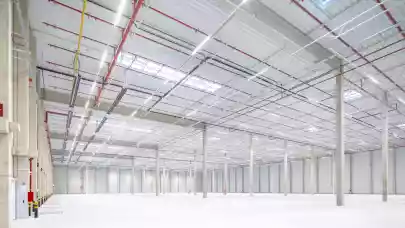
The retail sector has been leading the investment activity in the first half of 2023 across CEE, having a share of 35% of the total volume of transactions that reached around €2.02 billion, according to a Colliers report.
Moreover, the retail segment included the only transaction over €100 million in Q2, which was a shopping centre in Pardubice, Czech Republic.
At the same time, offices accounted for 29.5% of the total investment volume in the first semester, similar to the industrial and logistics segments.
Nonetheless, the commercial real estate investment activity was one of the lowest on record in H1 2023. Poland secured a majority share of regional volumes at around 42% but activity overall was slow. The Czech Republic followed with a 34% share. Bulgaria was the only market in the region to record a year-on-year increase, while the other markets all had drops in volumes of between 42% and 87%, according to Colliers.
Through the end of this year, the total investment volume could reach €5.0 billion, but the estimate will be shaped by the price discovery phase of assets in this region.
“Economic growth faltered in the CEE-6 region at the start of 2023, with 3 countries, Czech Republic, Hungary and Poland seeing negative annual GDP growth as of Q1 2023, despite Romania and Bulgaria recording the best performances after their economies expanded by over 2%. Ahead of the second quarter GDP results, due mid-August, we can note that the weak streak is set to continue, at least over the short term, as high-frequency indicators are still not up to par for quite a few of the countries,” said Silviu Pop, Director of Research for CEE and Romania at Colliers.
The report points out that the impact of high interest rates, accompanied by an increase in the cost of risk, alongside a shaky global economic backdrop is still negatively impacting countries in the CEE region. While ‘core inflation’, which strips away components like energy and seasonal food items, is seeing a decline, the overall inflation rate remains a challenge.
Domestic capital has been the most active in CEE
The prime yields environment remains uncertain, and analysts are considering various factors that are impacting liquidity such as interest rates, bond maturities, ESG compliance and structural changes to occupier markets, for some sectors where applicable.
“With all-in financing costs currently somewhere above 5.5% driven by significantly higher interest rates, as well as the costs of other financial tools such as interest rate swaps. In addition, the spread to other investment strategies has largely disappeared and in some cases are starting to look like compelling alternatives to real estate, putting further pressure on buyers’ expectations of pricing,” says Kevin Turpin, Regional Director of Capital Markets, CEE at Colliers.
On the investment side, CEE-6 domestic capital has been the most active so far in 2023, with an impressive 59% share of total regional volumes. In particular, Czech capital (40%) secured the highest volume overall and almost 17% in just 2 transactions (both retail). Other CEE regional capital picked up a further 19%. These were followed by European (14%), APAC (7%), USA (5.4%) and Middle Eastern (5%) capital.
“We still maintain a very rosy long-term view regarding the CEE- 6 region. Between the geopolitical reshuffling taking place globally, the fact that CEE economies have a solid track record of fast economic development and still offer some of the most attractive wage-productivity gaps in the Western world, we would consider any potential medium-term pain to offer opportunities geared at the longer-term,” concluded Pop.



